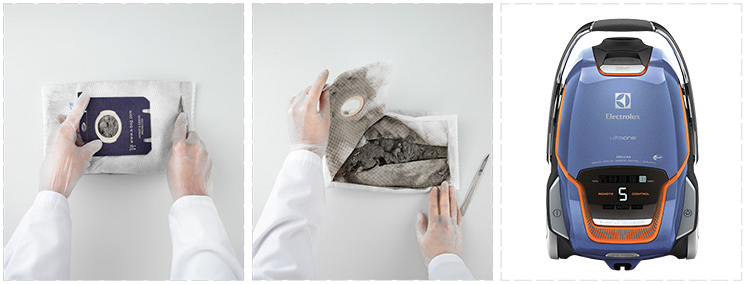Consider the ‘Invironment’ on World Environment Day

Particle pollution is a global environmental issue, generally focusing on outdoor air pollution. However, people in Asia Pacific homes spend 90% of their time indoors and therefore the ‘invironment’ is just as important to consider as the environment. Particles that have been found in homes have shown to contain traces of heavy metals and mineral material. Depending on the amount, prolonged exposure to these particles can cause serious allergy and respiratory issues.
Electrolux gathered dust bags from consumer homes with the purpose to investigate the indoor environment. Samples were gathered from cities with various air pollution issues – Los Angeles, Sao Paolo, Stockholm, Paris, Singapore, Seoul and Taipei. The new generation Electrolux UltraOne® was the perfect tool for the job as the highly efficient vacuum cleaner has a front-to-end sealed system – from nozzle to air outlet. Due to a palette of new patents, and a well-balanced combination of suction, airflow and dust pick-up, the UltraOne® captures 99.999% of all particles it vacuums. Fitted with both a specially developed dust bag, called Ultra Long Performance s-bag® and a highly efficient HEPA 13 filter that cleans up to 99.95% of the released air, the UltraOne® is the Electrolux solution to polluted invironment issues and can help towards achieving a cleaner and healthier home.
The analysis was carried out at the Swedish University of Agricultural Science, using an elemental detector that identifies un-organic particles amongst the dust.
“Particle research and equipment is usually focused on measuring particle amount and size. In the vacuum cleaner study together with Electrolux we’ve instead been focusing on quality rather than quantity – what actually constitute the particles,” says GulaimSeisenbaeva, Senior scientist and PhD.
The particle findings encompass a wide range – from unexpected findings, such as Bismuth traces from hunting projectiles, to common materials as plastic and concrete.
The results show that what is outdoors affects what is indoors – 58% of the particle findings originate from outdoor sources. Traffic pollution is for example revealed via traces from car motors lubricants, exhaust residues, and iron and zinc oxides that emerge as cars brake. Other less pleasant findings include soot particles and electronic capacitor filling with heavy metals such as Zirconium, Niobium, Cadmium and Barium – that depending on the amount can cause allergy and respiratory damage. One of the dust bags also revealed a mix of thallium and copper that is a highly poisonous combination (Thallium has, because of its historic popularity as a murder weapon, gained notoriety as “inheritance powder”).
A general conclusion is that the indoor environment is dependent on context, both the immediate surroundings and factors such as proximity to traffic or local climate conditions.
But the most significant finding is perhaps that your indoor environment is greatly affected by… you. Habits, preferences, activities and personal possessions determine the inside of your dust bag. In other words: the dust bag tells the truth about you and your lifestyle.
5 Tips To Facilitate A Good “Invironment”
• Vacuum more often: Perhaps the most obvious advice – cleaning your home more often is one of the most direct ways to reduce the presence of particles indoors. And remember an old vacuum cleaner cannot contain dust and particles as efficaciously as modern ones – it can make it worse.
• Vent when raining: Adequate ventilation is key to ensure a healthy indoor environment, and opening a window is perhaps the oldest trick in the book. A great timing to do so is while raining, or after rain, as it refreshes the air and reduces the concentration of particles.
• Get plants: Plants are not just a great thing to combat outdoor environment, studies by NASA also shows that houseplants is a useful tool in retaining indoor air pollution as they have the capacity to filter out common volatile organic compounds (so called VOCs).
• Take off your shoes: Your shoes are often the link between outdoor and indoor environments. Make sure to take off your shoes when you get home, or change to shoes specifically committed for indoor-use. Another tip is to use a generously sized doormat at every entry point.
• Inventory your lifestyle: The variables that determine your indoor environment is to a great extent dependent on – you.
If you are renovating, you will probably find gypsum particles. If you haven’t renovated at all, you are likely to find lead particles derived from old paint. Smoking, pets, work, proximity to heavy traffic – take five minutes to consider your everyday habits and activities and if there are obvious sources of pollution that you could minimize or counter, for example by making use of some of the tips above.


